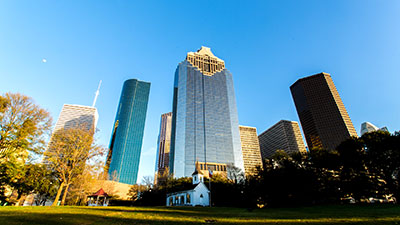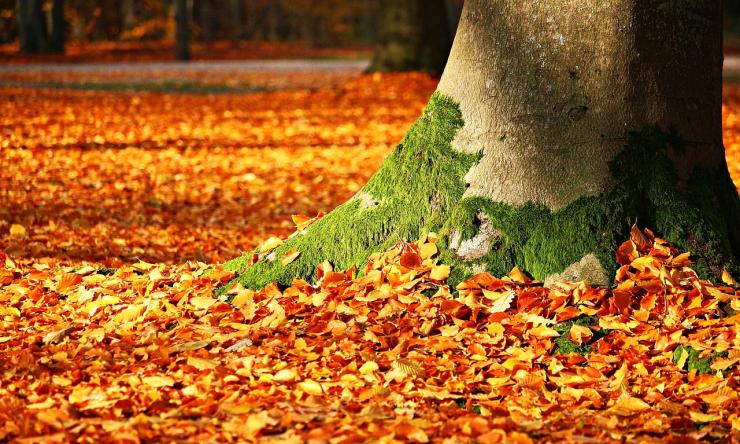Don’t fall for allergies this season
It‚Äôs finally fall, and as the crisp weather rolls in, many are rushing to get outside. As allergens fill the air, people should take precaution when enjoying time outdoors this season. A ≤ð¡Ò…Á«¯»Îø⁄ allergist and pulmonologist provides tips to maintain allergies this fall.
“The main issue driving the differences in the fall compared to other times of the year is the pattern of weather and nature of the allergens in the air,” said Dr. David Corry, professor of immunology, allergy and rheumatology at Baylor.
The main pollen in the air this time of year is ragweed. Mold also is abundant in the fall, and there are many different species of mold. There is often more mold in the air this time of year due to the effect of cold fronts.
“Cold fronts drop the moisture and make the ragweed grow. High winds kick up, carrying the spores and pollen into the air,” Corry said.
Humidity favors mold growth, so fungal growth season occurs during humid months (spring and summer). As the cold front comes through, the dry air brings relief from humidity, slowing fungus growth. And as growth slows down, it starts producing the spores that fill the fall air.
“This really begins to take off as air dries out and humidity is limited,” Corry said. “They can’t grow without humidity, so they switch to other activities, which is making spores. With the dryness and winds kicking up, the spores are perfectly posed to get in the air and stay in the air.”
Symptoms
People will present a collection of allergy symptoms that include:
- Itchy/watery eyes.
- Sneezing.
- Runny nose.
- Postnasal drip.
- Itching of the skin around the nose, hands and other exposed parts of the body.
It can be difficult to determine whether you have allergies or are sick, but Corry recommends looking for systemic symptoms. A cold might present similar symptoms as allergies but also will make you feel run down or have muscle aches and joint pains. You can experience a sore throat and cough from excessive postnasal drip from allergies, but these symptoms are more likely viral.
“It’s a matter of degree of these symptoms, and it becomes more obvious over time,” he said.
Relief
Corry recommends taking an oral antihistamine that does not produce sedation or drowsiness. You should take one per day, but some might need to take two if symptoms are particularly bad. Avoid taking more than two per day unless under the advice of a physician.
Nasal sprays also can provide relief. There is an intranasal steroid that reduces inflammation, helping slow down allergy-causing cells and deactivating them. An inhaled antihistamine also can provide allergy relief.
For more severe cases, people might need more socialized care with immunotherapy, a slow vaccination procedure.
“Go to your allergist to do specialized testing to determine what you’re allergic to. Once that’s known, you can get injections over time to reconfigure your response to those agents,” Corry said.
Outdoor activities
Those who want to be outside for fall activities, such as visiting a pumpkin patch, should proceed with caution. Being in the pumpkin patch will likely lead to ragweed and grass exposure. Pollen might get into the nose due to wind. Eczema-like reactions from lying in the grass are common with grass allergies. Other weeds also could be problematic in places like fields and pumpkin patches.
If you are out in open fields, Corry recommends wearing sturdy boots, socks that go up to your knee, long sturdy pants and a long shirt to protect from fire ants and pollen getting onto the skin. Wear an N95 mask if you are sensitive to allergens.
Pollen can also get into the home, so after spending time in the grass or picking pumpkins, remove your clothes immediately, put them in the wash and take a shower.
“Pollens will be all over you, and if you don’t get them off, they will work their way deeper into your skin and you might wipe them into your eyes, causing irritation,” he said.
Rinsing out the nose with nasal spray or a Netti pot also can be helpful.
Indoor environment
No matter how careful you are, you bring allergens into the home. Those with severe allergies should consider their indoor environment. HEPA filters should be in the main rooms of your home where you spend the most time to keep the air consistently clean. Vacuum the home regularly and make sure the vacuum has a HEPA filter attached to remove the particles. This will get rid of most pollen and spores in the home. The general air filter in the house should also be HEPA filter equipped.
“You have to know what your humidity is on the inside of your home and regulate it,” Corry said.
A well-designed air condition system will keep humidity within a reasonable limit, which is around 35-50%. If humidity goes beyond 60%, the mold will start to take off and grow on everything in the house. Keep the humidity down to prevent mold spores from being generated in the home.



